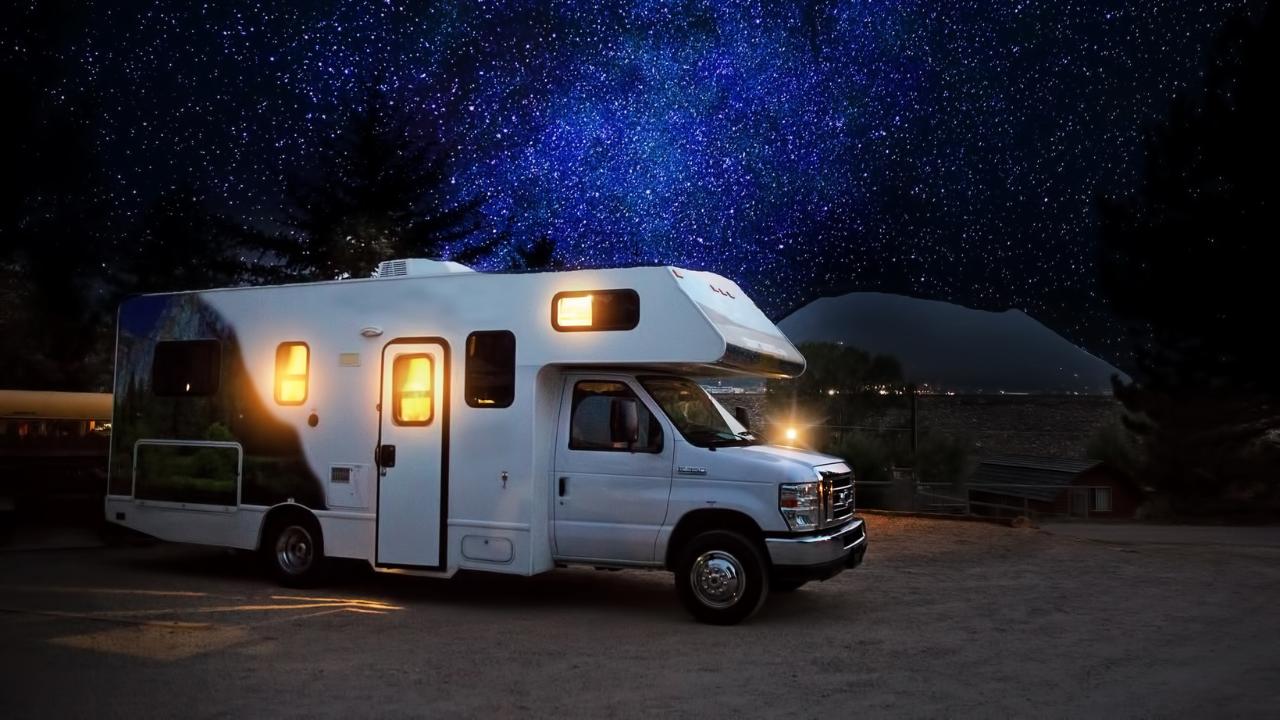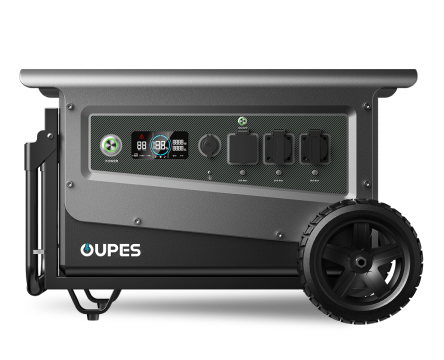
Overview
Whether you’re weekend camping, full-time RVing, or preparing for off-grid travel, one of the most common questions is:
“How much solar power do I actually need for my RV?”
The answer depends on your energy consumption, climate, battery capacity, and how long you want to remain self-sufficient without plugging into shore power. According to the National Renewable Energy Laboratory (NREL), RV solar needs can range from 200W for minimal use to more than 1200W for full-time boondocking.
This guide provides a structured, professional approach to calculating RV solar requirements, including energy audits, power generation formulas, comparison tables, and the role of portable solar generators and power stations from brands like OUPES. No other brand is mentioned.
Key Factors That Determine RV Solar Requirements
1. Your Daily Power Consumption
Your total watt-hours (Wh) used per day determine the solar output you need. Lighting, refrigeration, laptops, vents, water pumps, and entertainment electronics all contribute to your load.
2. Sunlight Availability (Peak Sun Hours)
The U.S. Department of Energy reports that most states receive between 3–6 peak sun hours (PSH) daily. Solar output depends directly on PSH:
- 3 PSH = cloudy or northern regions
- 4–5 PSH = moderate conditions
- 6+ PSH = ideal desert or southern U.S. conditions
3. RV Lifestyle Type
- Minimalist travelers: lights + phones + small devices
- Typical RV users: fridge + fans + laptops + water pump
- Boondockers: add TV, microwave, CPAP, Starlink, etc.
4. Battery Storage Capacity
Solar panels don't power RV appliances directly—they recharge your batteries. A larger battery bank requires more solar to fully recharge daily.
How to Calculate Your RV Daily Power Consumption
To determine your solar needs, start by calculating your daily energy usage. Multiply each appliance's wattage by the hours used per day:
Daily Energy (Wh) = Power (W) × Hours Per Day
Typical RV Appliance Consumption
| Appliance | Average Wattage | Estimated Daily Use (Wh) |
|---|---|---|
| 12V RV Fridge (Compressor) | 45–70W | 200–450 Wh/day |
| Roof Vent Fan | 20–40W | 80–200 Wh/day |
| LED Lighting | 3–10W | 30–80 Wh/day |
| Laptop | 45–90W | 90–180 Wh/day |
| Water Pump | 60–100W | 20–50 Wh/day |
| Starlink | 50–75W | 100–400 Wh/day |
Most RV travelers use between 800–2000 Wh/day, depending on refrigerator size and electronics.
How to Determine the Ideal Solar Array Size
Step 1: Total Daily Consumption
Example: Let’s assume your RV uses 1,200 Wh/day.
Step 2: Divide by Peak Sun Hours
Using 4 PSH (typical U.S. average):
Required Solar = 1200 Wh ÷ 4 = 300W
Step 3: Add Efficiency Losses (20–30%)
Solar systems lose energy through wiring, temperature, and inverter conversion. Multiply by 1.25:
300W × 1.25 = 375W
Recommended Minimum Array
- Minimalist RVing: 200–300W
- Standard travel use: 400–600W
- Boondocking: 800–1200W
NREL studies confirm that a 400–800W solar array is sufficient for most full-time RV travelers with efficient appliances.
Battery Storage Requirements
Solar panels only generate power during the day. Your battery bank keeps appliances running at night or under cloudy skies. Lithium-iron phosphate (LiFePO4) is the preferred chemistry due to long lifespan and safety.
How Much Battery Capacity Do You Need?
Use this formula:
Battery Capacity (Wh) ≥ 2 × Daily Consumption
Recommended Battery Size
- Light use: 1000–1500 Wh
- Standard RV use: 2000–3000 Wh
- Full-time off-grid: 4000–6000 Wh+
Large portable power stations (such as OUPES Mega series) fall into these ranges and can support RV refrigerators, fans, laptops, and even AC appliances for limited periods.
Solar Panels vs. Portable Solar Generators
Many RVers combine rooftop or portable solar panels with an all-in-one power station. This increases energy resilience and simplifies setup.
Advantages of RV Solar Panels
- Quiet and maintenance-free
- Ideal for long-term off-grid use
- Excellent for recharging batteries daily
- Zero fuel cost
Advantages of Portable Solar Generators
- All-in-one inverter + battery + charge controller
- No wiring or installation required
- Can be moved between RV, home, and outdoor use
- Safe for indoor operation
OUPES portable power stations are commonly used as a secondary or primary energy source for RV travelers who want plug-and-play solar power without complex installation.
RV Solar System Comparison Table
| Setup Type | Typical Solar Size | Battery Capacity | Suitable For |
|---|---|---|---|
| Minimalist RV Setup | 200–300W | 1000–1500 Wh | Weekend camping, small RVs |
| Standard Off-Grid RV Setup | 400–600W | 2000–3000 Wh | Most RV travelers |
| Full-Time Boondocking | 800–1200W | 4000–6000 Wh | Full-time off-grid living |
| Portable Solar Generator Setup | 200–800W (portable panels) | 1800–5000 Wh (portable power station) | Flexible RV travel, no installation needed |
How Portable Power Stations Like OUPES Support RV Solar Systems
Portable power stations provide plug-and-play off-grid electricity and can be paired with foldable solar panels to create a complete RV energy system. Advantages include:
- Built-in MPPT solar charge controllers
- AC, DC, Anderson, and USB ports supporting multiple RV appliances
- Safe indoor operation and silent performance
- Expandable battery options (depending on model)
Many RV travelers use units from OUPES for powering refrigerators, CPAP machines, routers, laptops, tools, and small kitchen appliances during boondocking trips.
FAQ
1. Is 400W of solar enough for an RV?
Yes—for light to moderate use. It supports refrigeration, lights, fans, and small electronics. For full-time off-grid living, 600–1200W is recommended.
2. How many batteries do I need to run an RV fridge?
A typical 12V compressor fridge uses 200–450 Wh per day. A 1000–1500 Wh battery or portable power station is usually sufficient for daily operation.
3. Can solar panels run my RV air conditioner?
Not directly. Air conditioners consume 1200–2000W continuously. They can be powered briefly by large battery systems, but solar alone rarely supports extended AC use.
4. Are portable solar generators good for RV living?
Yes. They’re ideal for travelers who want a simple, flexible system without installing rooftop solar. They are commonly used as backup energy sources or primary systems for small RVs.
5. How much solar do I need for full-time boondocking?
Most full-time RVers use 800–1200W of solar panels and 3000–6000 Wh of lithium storage.




























